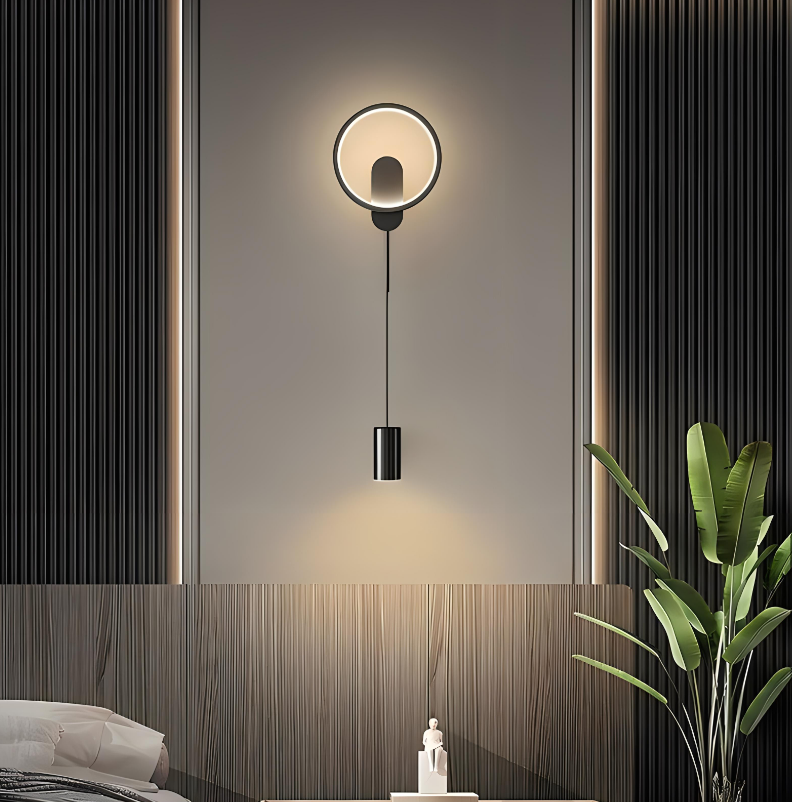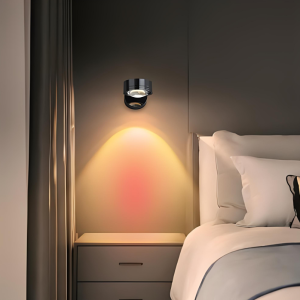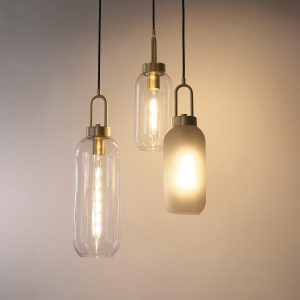
Brighten Your Space with Living Room Lighting
Lighting plays a crucial role in the overall design and functionality of a living room. It not only illuminates the space but also sets the mood and atmosphere. The right lighting can transform a dull and uninspiring room into a warm and inviting space. Whether you are entertaining guests, watching TV, or simply relaxing with a book, having the appropriate lighting can greatly enhance your experience.weinot
The mood and atmosphere of a living room can be greatly influenced by the type of lighting used. Bright and vibrant lighting can create an energetic and lively atmosphere, perfect for social gatherings and activities. On the other hand, soft and dim lighting can create a cozy and intimate ambiance, ideal for relaxation and unwinding after a long day. By carefully selecting and positioning lighting fixtures, you can create the desired atmosphere in your living room.
Types of Living Room Lighting
There are various types of lighting fixtures available for living rooms, each serving a specific purpose and function. The main types of lighting fixtures include ambient lighting, task lighting, and accent lighting.
Ambient lighting is the general illumination that fills the entire room. It provides overall brightness and allows you to navigate through the space safely. Common types of ambient lighting fixtures include chandeliers, pendant lights, recessed lights, and track lights.
Task lighting is focused lighting that is used for specific activities such as reading, working on a laptop, or playing board games. It provides concentrated light in a particular area to ensure visibility and reduce eye strain. Table lamps, floor lamps, and desk lamps are popular choices for task lighting.
Accent lighting is used to highlight specific features or objects in the living room such as artwork, sculptures, or architectural details. It adds depth and visual interest to the space. Wall sconces, picture lights, and track lights with adjustable heads are commonly used for accent lighting.
Choosing the Right Living Room Lighting for Your Space
When selecting lighting fixtures for your living room, there are several factors to consider. First, think about the size and layout of your space. A large living room may require multiple lighting fixtures to ensure adequate illumination, while a smaller space may only need one or two fixtures. Consider the height of your ceilings as well, as this will determine the appropriate size and scale of the lighting fixtures.
Next, consider the style and design of your living room. Lighting fixtures should complement the overall aesthetic of the space. For a modern and minimalist living room, sleek and simple fixtures with clean lines would be a good choice. On the other hand, a traditional or rustic living room may benefit from more ornate and decorative lighting fixtures.
It is also important to consider the function and purpose of each lighting fixture. Determine what activities will take place in your living room and choose lighting fixtures accordingly. For example, if you enjoy reading in your living room, a floor lamp or table lamp with an adjustable arm would be a practical choice for task lighting.
Tips for Proper Placement of Living Room Lighting
The placement of lighting fixtures in a living room is crucial to achieving the desired lighting scheme. Here are some guidelines to follow:
– Ambient lighting fixtures should be evenly distributed throughout the room to provide uniform illumination. If using recessed lights or track lights, space them out evenly across the ceiling. If using pendant lights or chandeliers, make sure they are centered over the seating area or dining table.
– Task lighting fixtures should be positioned near areas where specific activities will take place. For example, a table lamp can be placed on a side table next to a reading chair, or a floor lamp can be positioned next to a desk for working.
– Accent lighting fixtures should be strategically placed to highlight specific features or objects in the living room. Wall sconces can be installed above artwork or architectural details, while picture lights can be used to illuminate paintings or photographs.
By following these placement guidelines, you can create a well-balanced and functional lighting scheme in your living room.
The Importance of Dimmers in Living Room Lighting
Dimmers are an essential component of living room lighting design as they allow you to adjust the brightness and intensity of the light. They offer flexibility and control, allowing you to create different moods and atmospheres in your living room.
Dimmers can enhance the functionality of your living room by providing the right amount of light for different activities. For example, during a movie night, you can dim the lights to create a theater-like ambiance. On the other hand, when hosting a party, you can increase the brightness to create a lively and energetic atmosphere.
In addition to functionality, dimmers also contribute to the overall ambiance of a living room. By adjusting the brightness, you can create a cozy and intimate atmosphere for relaxation or a bright and vibrant atmosphere for socializing. Dimmers allow you to customize the lighting to suit your preferences and needs.
When selecting dimmer switches, make sure they are compatible with the type of lighting fixtures you have installed. LED lights require specific dimmers designed for LED technology, while incandescent lights work with standard dimmers. It is also important to hire a professional electrician for proper installation to ensure safety and functionality.
Using Accent Lighting to Highlight Artwork or Decor

Accent lighting is an effective way to draw attention to specific features or objects in your living room. It adds visual interest and creates focal points in the space. Here are some tips for using accent lighting effectively:
– Select the right type of accent lighting fixture for your needs. Wall sconces are a popular choice as they can be installed directly on the wall and provide focused light. Picture lights are another option, designed specifically for illuminating artwork or photographs.
– Position accent lighting fixtures strategically to highlight specific features or objects. For example, if you have a large painting above the fireplace, install wall sconces on either side to draw attention to the artwork. If you have a collection of sculptures on a shelf, use adjustable track lights to direct light onto each piece.
– Experiment with different angles and intensities of light to achieve the desired effect. Play around with the positioning of the fixtures and adjust the direction of the light to find the most flattering and dramatic lighting.
By using accent lighting effectively, you can showcase your favorite artwork or decor and create a visually stunning living room.
Incorporating Natural Light into Living Room Lighting Design
Natural light is a valuable resource that can be used to supplement artificial lighting in a living room. It not only provides illumination but also creates a sense of openness and connection to the outdoors. Here are some tips for incorporating natural light into your living room lighting design:
– Maximize natural light by keeping windows clean and unobstructed. Remove heavy curtains or blinds that block sunlight and replace them with sheer or light-colored curtains that allow natural light to filter through.
– Position furniture strategically to take advantage of natural light. Place seating areas near windows to benefit from the natural light during the day. Arrange furniture in a way that does not block the flow of light into the room.
– Use reflective surfaces such as mirrors or glass to bounce natural light around the room. Place a large mirror opposite a window to reflect sunlight and make the space appear brighter and more spacious.
By incorporating natural light into your living room lighting design, you can create a bright and airy space that feels welcoming and refreshing.
Creating a Cozy Atmosphere with Warm Living Room Lighting
Warm lighting can create a comfortable and inviting atmosphere in a living room. It adds warmth and coziness, making the space feel more intimate and relaxing. Here are some tips for selecting warm lighting fixtures and bulbs:
– Choose lighting fixtures with warm-colored finishes such as brass, copper, or bronze. These finishes emit a warm and inviting glow that complements the overall ambiance of the room.
– Opt for light bulbs with a warm color temperature, typically around 2700K to 3000K. These bulbs emit a soft and warm light that mimics the glow of candlelight or a fireplace.
– Consider using indirect lighting techniques such as wall sconces or uplights to create a soft and diffused light. This type of lighting creates a cozy and intimate atmosphere without harsh shadows.
By incorporating warm lighting into your living room, you can create a space that is perfect for relaxation and unwinding.
Energy-Efficient Living Room Lighting Options
Energy-efficient lighting options are not only environmentally friendly but also cost-effective in the long run. They consume less energy and have a longer lifespan compared to traditional incandescent bulbs. Here are some energy-efficient lighting options for living rooms:
– LED (Light Emitting Diode) lights are highly energy-efficient and have a long lifespan. They are available in various shapes and sizes, making them suitable for different types of lighting fixtures.
– CFL (Compact Fluorescent Lamp) bulbs are another energy-efficient option. They use less energy than incandescent bulbs and last much longer. However, they do contain a small amount of mercury, so proper disposal is necessary.
– Halogen bulbs are more energy-efficient than incandescent bulbs but less efficient than LED or CFL bulbs. They provide bright and focused light, making them suitable for task lighting.
By using energy-efficient lighting fixtures in your living room, you can reduce your carbon footprint and save money on your energy bills.
Maintenance and Upkeep of Living Room Lighting Fixtures
Proper maintenance and upkeep of lighting fixtures are essential to ensure their longevity and functionality. Here are some tips for cleaning and maintaining your living room lighting fixtures:
– Regularly dust and clean lighting fixtures to remove dirt and debris. Use a soft cloth or a feather duster to gently wipe the surfaces. Avoid using abrasive cleaners or harsh chemicals that can damage the finishes.
– Replace burnt-out bulbs promptly to maintain optimal illumination. Make sure to turn off the power before replacing bulbs to avoid electrical shock.
– Inspect wiring and connections regularly to ensure they are secure and in good condition. Loose or damaged wiring can be a safety hazard and should be repaired or replaced immediately.
By taking proper care of your lighting fixtures, you can extend their lifespan and ensure they continue to provide optimal illumination in your living room.
In conclusion, lighting is a crucial element in the design and functionality of a living room. It sets the mood and atmosphere, enhances the overall aesthetic, and provides illumination for various activities. By selecting the right type of lighting fixtures, considering factors such as size and style, and properly placing them in the space, you can create a well-lit and inviting living room.
Dimmers offer flexibility and control, allowing you to adjust the brightness and intensity of the light to suit different activities and moods. Accent lighting can be used to highlight specific features or objects in the living room, adding visual interest and creating focal points. Natural light can be incorporated into the lighting design to supplement artificial lighting and create a bright and airy space.
Warm lighting creates a cozy and inviting atmosphere, while energy-efficient lighting options are environmentally friendly and cost-effective. Proper maintenance and upkeep of lighting fixtures are essential to ensure their longevity and functionality. By following these tips and guidelines, you can create a well-lit and inviting living room space that meets your needs and preferences.


